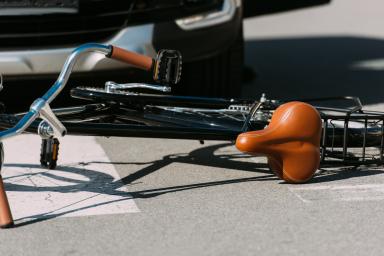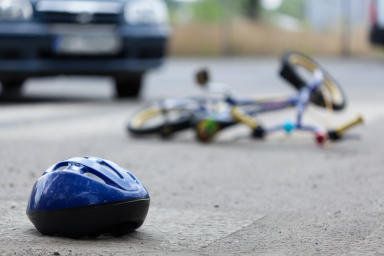How to Prevent Bicycle Accidents: Understanding the Causes

According to the CDC, bicyclists account for over 2% of road deaths involving motor vehicles. Many of these accidents are entirely preventable. The risk of serious injury can be reduced when drivers and cyclists take appropriate, responsible precautions. Cyclists across the country are required to follow the same traffic laws as motorists. However, these rules vary widely from state to state.
Understanding what causes bicycle accidents is the first step to prevention and reducing the danger of death or serious injury when they do occur. In this article, we examine the most common causes of bicycle accidents, as well as ways in which cyclists and drivers can work together to make the road safer for everyone.
Common Causes of Bicycle Accidents
Because bicycles have no external protection and less stability, they are more likely to be involved in accidents. As a result of these factors, accidents are more likely to result in serious injuries.
With that in mind, let’s look at the most common causes of accidents, why the circumstances are specifically dangerous for cyclists, and how following the rules of the road can help prevent injuries and fatalities.
Failure to Yield
According to the National Highway Traffic Safety Administration (NHTSA), the most common cause of injury to cyclists is being struck by a car, which accounts for 30% of injuries.
Car collisions can occur in a number of ways. Drivers failing to leave enough space between their car and a cyclist, or entering an intersection without checking for oncoming bikes, are common causes of accidents. According to the CDC, around 27% of bicycle accidents occur at intersections.
Drivers should remain alert at all times to the presence of cyclists and take extra care when passing or maneuvering. Cyclists should ensure they are visible to motorists by wearing bright clothing and installing their bikes with reflectors and lights.
Intoxicated Driving
The dangers of impaired driving are well-documented. According to the National Highway Traffic Safety Administration, more than 10,000 lives are lost every year to drunk driving. CDC data shows that around a third of accidents resulting in a cyclist’s death involve intoxicated drivers and/or cyclists.
Drivers impaired by drugs or alcohol are slower to react, putting themselves and other road users at risk. Impairment may also decrease spatial awareness and increase the likelihood of falling asleep at the wheel or becoming dangerously drowsy. Rear-end accidents (and head-on collisions) caused by intoxicated drivers are some of the most common types of road accidents and can be especially dangerous to cyclists.
Remaining vigilant to the risk of intoxicated drivers can help cyclists stay safe. But it’s important to remember that cyclists who drink and ride also endanger themselves and others. The surest way to eliminate the risk of having an accident while intoxicated is to avoid cycling while under the influence.
Right & Left Cross Collisions
Right-cross collisions happen when a car pulls out of a street, parking lot, or driveway to the right of a bicycle when the cyclist is already crossing the vehicle’s path or when it is too late for them to avoid a collision.
Left-cross collisions happen when cars moving in the opposite direction turn left in front of the cyclist, cutting them off and causing an accident. Left-cross collisions are particularly dangerous for cyclists on sidewalks, as drivers often fail to look for cyclists who are not on the road. For this reason, cyclists should obey the same traffic laws as motorists, sticking to the road, avoiding the sidewalk, and cycling with the flow of traffic.
To prevent both right and left cross collisions, cyclists should make sure they are visible to drivers by using headlights, flashing lights, and high-visibility reflective clothing. Making eye contact and slowing down if there is a perceived risk from a distracted driver can also mitigate risk. As with all accidents, protective headgear can make the difference between life and death or prevent a minor accident from causing serious injury.
Right Hook Crashes
Right hook crashes occur when a driver overtakes a cyclist and makes a right turn, cutting them off in the process. The cyclist is either hit by the car during the turn or cannot avoid hitting the car before being able to come to a stop.
As with most bicycle accidents, when a motorist is at fault, the driver has either not seen the cyclist, forgotten they are there, or assumed they had left enough space when passing.
To avoid right hook accidents, cyclists should show extra caution when being passed by a car and assume that they intend to turn right. Cycling to the left of the lane can improve visibility, encourage drivers to take more care when passing, and provide the cyclist with more space to maneuver if a collision is about to occur.
Dooring
Dooring occurs when a driver opens their door in the path of an oncoming cyclist. The injuries from dooring accidents can be especially egregious, especially if the cyclist is moving at high speed. Dooring can occur suddenly, usually as a result of a driver’s obliviousness to other road users while their car is parked.
Cyclists should remain vigilant in built-up areas with many parked cars, adjusting their speed and momentum accordingly to reduce stopping and reaction times. Riding to the left of a lane can help cyclists swerve and optimize visibility. Keeping an eye on parked cars with someone in the driver’s seat can also help cyclists remain alert to dooring risks.
Rear-ending
Rear-ending is one of the most common types of accidents.
To minimize the risk of rear-end crashes, cyclists should wear high-visibility reflective clothing and install front and rear lights on their bikes. Riding closer to the inside of a lane can improve visibility and safety.
Surface Conditions
Potholes, drainage grates, cobblestones, cracks in the road, fallen signage or utility poles - all of these hazards may go unnoticed by car drivers while being dangerous for cyclists. Thin tires and instability make it easier for cyclists to lose control and have an accident.
For example, sewer gratings and storm drains can easily go unseen by cyclists until it’s too late. The narrow wheels of a bicycle can get stuck in between grates, causing a sudden loss of momentum. Many jurisdictions have changed the design of such gratings to protect cyclists, but they remain a common factor in cycling accidents.
Cyclists can reduce risk by familiarizing themselves with the routes they plan to take and the hazards and obstacles they can expect.
Expertise.com StaffAuthor
Step into the world of Expertise.com, your go-to hub for credible insights. We don't take accuracy lightly around here. Our squad of expert reviewers, each a maestro in their field, has given the green light to every single article you'll find. From rigorous fact-checking to meticulous evaluations of service providers, we've got it all covered. So feel free to dive in and explore. The information you'll uncover has been stamped with the seal of approval by our top-notch experts.




